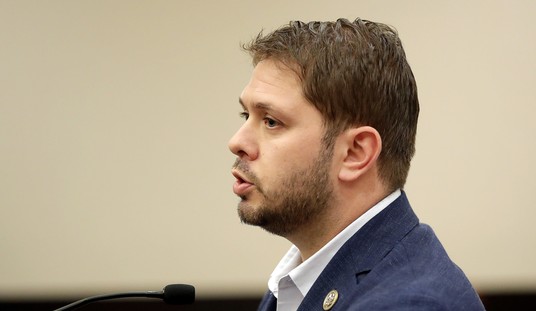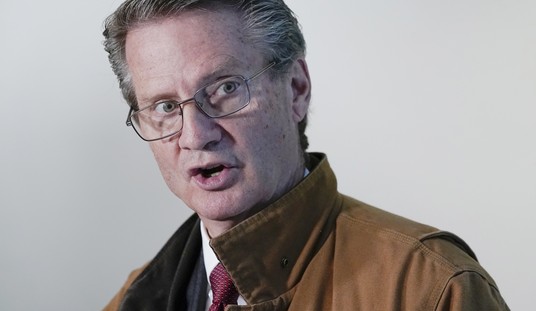Obama economic adviser Laura Tyson has suggested that the U.S. should consider a new economic stimulus package because the $787 billion bill enacted in February was "a bit too small." Right. That $787 billion came just months after the Bush stimulus of $150 billion (how quaint it seems in retrospect), the $700 billion TARP program, the $60 billion auto bailout, and a $3.6 trillion budget for the next fiscal year among other spending orgies. President Obama has declined to rule out another gargantuan transfer payment from the future to the present. Other Democrats, Roll Call suggests, are less enthusiastic. "Bailout fatigue has settled in -- and it would be very difficult to get such a bill through the Senate," an aide told the paper.

If this massive hemorrhage of tax dollars doesn't provoke second thoughts, people have forgotten how to think. Though the Obama administration insisted that the stimulus was too urgent to permit debate, too pressing to permit time to read the legislation, only a fraction of the money allocated has actually been pushed out the door five months on. And while Americans were encouraged to conceive of the stimulus as a latter day Civilian Conservation Corps, with platoons of shovel-shouldering men marching out to repair roads, build bridges, and sing catchy folk songs, the reality is otherwise.
Ninety billion dollars of the stimulus funds are allocated not to infrastructure but to increasing the federal matching portion of state Medicaid expenses through Jan. 1, 2011. As President Obama's OMB Director Peter Orszag acknowledged in congressional testimony last year, "if federal assistance merely provides fiscal relief by paying for spending that would have occurred anyway and does not affect state and local revenues in the short run, then it provides no economic stimulus." Transferring check writing from Trenton and Sacramento and Augusta to Washington, D.C., may ease state budget crises, but by no stretch can this be considered a jobs program or anything but a trifling stimulation of economic activity. Besides, it rewards states that have failed to budget prudently and punishes those who have shown self-restraint. Will those states, most disastrously California, that got themselves into a fiscal mess by failing to control spending, be more or less likely in the future to act responsibly now that they are receiving a federal subvention?
Recommended
As for that section of the stimulus that does deal with infrastructure, an Associated Press study of 5,500 planned transportation projects has found that stimulus cash is flowing less to counties with high unemployment rates and more to those with lower unemployment. "Altogether, the government is set to spend 50 percent more per person in areas with the lowest unemployment than it will in communities with the highest."
If you wonder how the government could be so inept as to fail to target aid toward those most in need, you might want to consider that when politicians make decisions, they tend to be politically motivated. Sen. Tom Coburn, R-Okla., has assembled a list of 100 stimulus recipients. Here's an instructive one: The John Murtha Airport in Johnstown/Cambria County, Pa., will receive $800,000 in economic stimulus funds to repave the backup runway, though only about 20 people a day use the airport. How odd.
The Social Security Administration admits that it mailed out 10,000 checks (using stimulus funds) to "deceased persons." The SSA blamed pressure to spend the money quickly.
A non-existent lake in Oklahoma is going to get $1 million for a guardrail.
Union, N.Y., (population 56,000) was notified that it would be receiving a $578,661 stimulus grant to prevent homelessness. The town fathers were nonplussed as 1) they had never applied for the grant, and 2) they do not have a homelessness problem. But note the number: It's so non-round, so specific. Is there a department at HUD responsible for inventing plausible-sounding numbers?
The state of Wisconsin, Coburn reports, has 1,256 structurally deficient bridges, more than Florida, Colorado, Arizona and Alaska combined. Yet no stimulus funds are flowing to repair those bridges. Instead, the feds are sending $15.8 million in transportation stimulus money to repair 37 rural bridges that hardly anyone uses. Why? It seems the rural projects were more "shovel-ready" and got pushed to the head of the queue.
But perhaps the most emblematic example of your tax dollars at work is this one: Road signs are being purchased at a cost of $300 apiece advertising that "This construction project" is being paid for with stimulus funds. Illinois alone has already spent $150,000 on such signs.
Yes, it's obvious that we need more of this.

























Join the conversation as a VIP Member